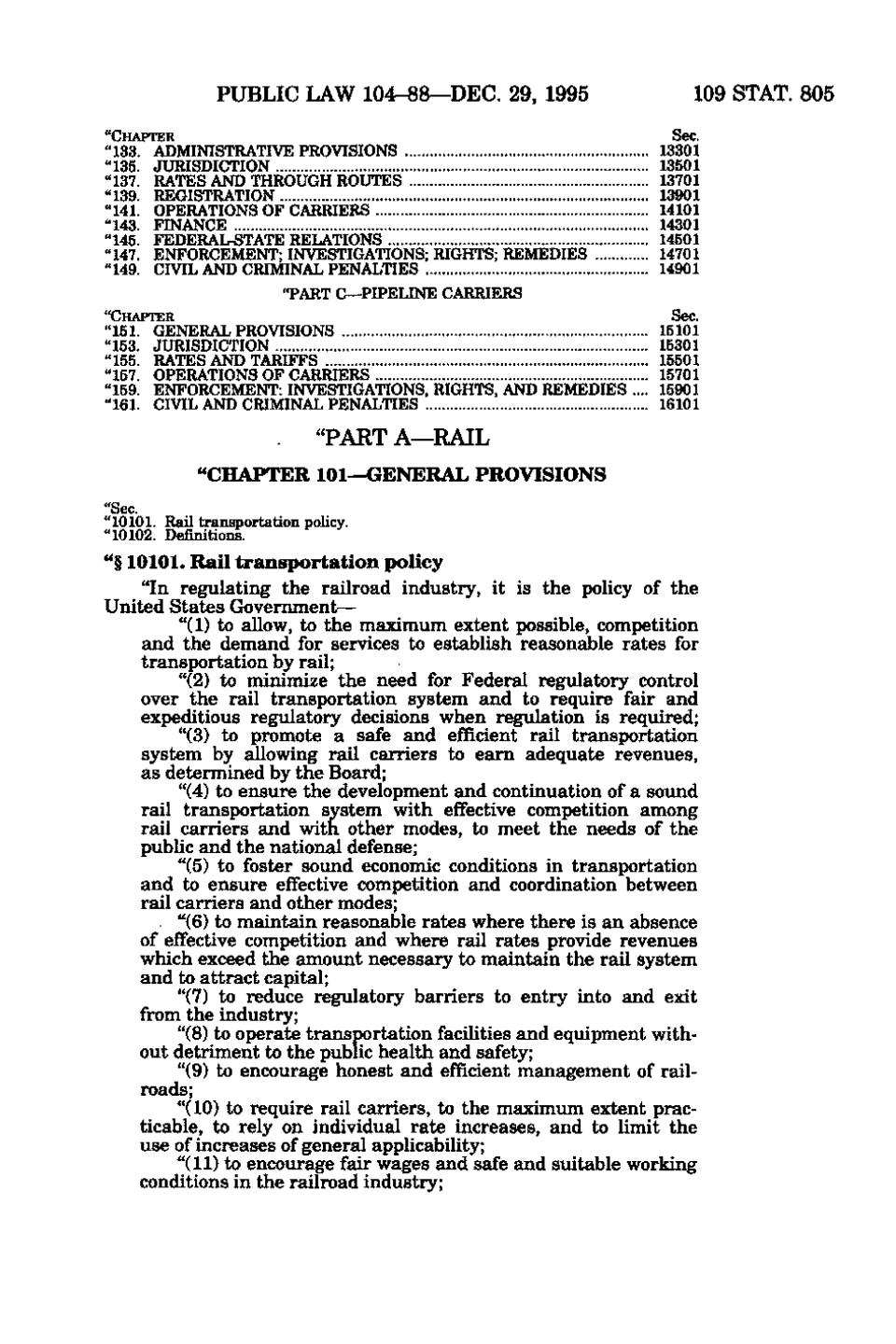PUBLIC LAW 104-88—DEC. 29, 1995 109 STAT. 805 "CHAPTKR SGC "133. ADMINISTRATIVE PROVISIONS 13301 "135. JURISDICTION 13501 "137. RATES AND THROUGH ROUTES 13701 "139. REGISTRATION 13901 "141. OPERATIONS OF CARRIERS 14101 "143. FINANCE 14301 "145. FEDERAL-STATE RELATIONS 14501 "147. ENFORCEMENT; INVESTIGATIONS; RIGHTS; REMEDIES 14701 "149. CIVIL AND CRIMINAL PENALTIES 14901 "PART C—PIPELINE CARRIERS ^'OHAPXPR. Sec "151. GENERAL PROVISIONS 15101 "153. JURISDICTION 15301 "155. RATES AND TARIFFS 15501 "157. OPERATIONS OF CARRIERS 15701 "159. ENFORCEMENT: INVESTIGATIONS, RIGHTS, AND REMEDIES.... 15901 "16L CIVIL AND CRIMINAL PENALTIES 16101 "PART A—RAIL " CHAPTER 101—GENERAL PROVISIONS "Sec. "10101. Rail transportation policy. "10102. Definitions. '*§ 10101. Rail transportation policy "In regulating the railroad industry, it is the policy of the United States Government— "(1) to allow, to the msiximum extent possible, competition and the demand for services to establish reasonable rates for transportation by rail; "(2) to minimize the need for Federal regulatory control over the rail transportation system and to require fair and expeditious regulatory decisions when regulation is required; "(3) to promote a safe and efficient rail transportation system by allowing rail carriers to earn adequate revenues, as determined by the Board; "(4) to ensure the development and continuation of a sound rail transportation system with effective competition among rail carriers and with other modes, to meet the needs of the public and the national defense; "(5) to foster sound economic conditions in transportation and to ensure effective competition and coordination between rail carriers and other modes; . "(6) to maintain reasonable rates where there is an absence of effective competition and where rail rates provide revenues which exceed the amount necessary to maintain the rail system and to attract capital; "(7) to reduce regulatory barriers to entry into and exit from the industry; "(8) to operate transportation facilities and equipment without detriment to the public health and safety; "(9) to encourage honest and efficient management of railroads; "(10) to require rail carriers, to the maximum extent practicable, to rely on individual rate increases, and to limit the use of increases of general applicability; "(11) to encourage fair wages and safe and suitable working conditions in the railroad industry;
�
